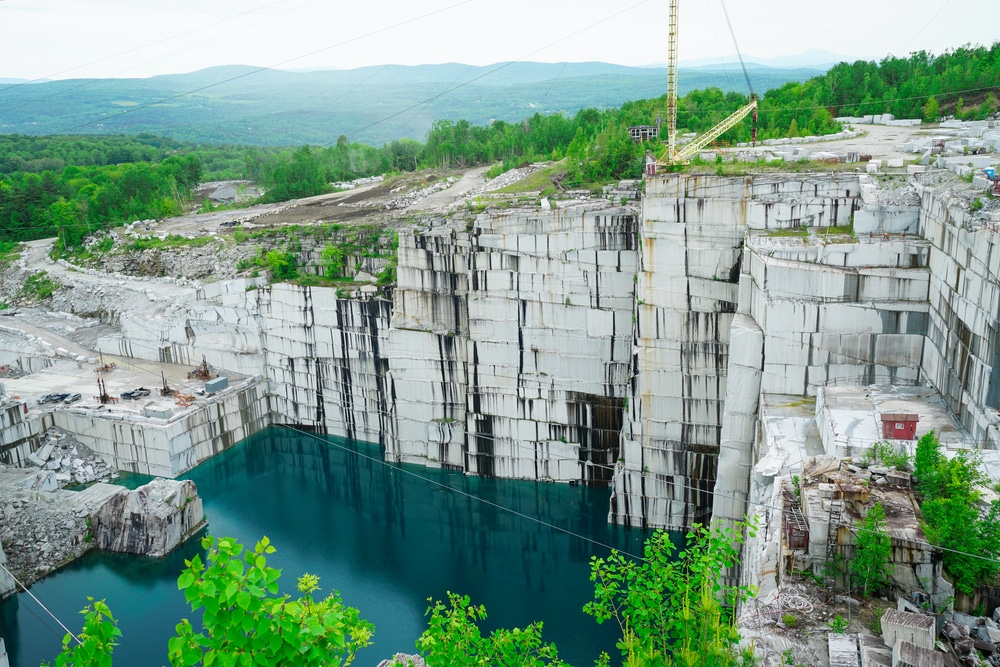Revealing Granite Quarries in South Africa Legacy: A Trip Through Quarries
Revealing Granite Quarries in South Africa Legacy: A Trip Through Quarries
Blog Article
Introducing the Mysteries of Granite Quarrying: Where Strength and Sophistication Meet
The globe of granite quarrying is a realm where the raw strength of nature assembles with human virtuosity to create structures that stand the examination of time with an air of style. From the depths of quarries to the precise sprucing up in workshops, the procedure of changing granite into architectural wonders is an intricate dance of tradition and technology. As we peer into the depths of this ancient craft, we start to reveal the hidden complexities that form the really essence of our developed environment.
The Origins of Granite Quarrying
In the annals of building history, the beginnings of granite quarrying are shrouded in a tapestry of old craftsmanship and geological wonders. Going back to ancient Egypt and Mesopotamia, the removal of granite from quarries noted the beginning of a trip that would at some point bring about the production of several of the globe's most legendary frameworks.
Granite quarrying's origins can be mapped to the experienced artisans who recognized the stone's sturdiness and visual charm. With a mix of primitive devices and sheer resolution, these very early quarry workers discovered granite blocks that would end up being the foundation of human beings.
As human beings developed, so did the methods of quarrying granite. The Romans, renowned for their design expertise, created advanced techniques for drawing out granite to build monuments, holy places, and roads that stood the test of time.
The tradition of these old quarrying techniques remains to shape modern-day architecture, with granite continuing to be an icon of toughness and sophistication in building and construction jobs around the globe. (granite quarries in south africa)
Tools of the Quarrying Trade
The evolution of granite quarrying strategies from old worlds to modern times highlights the crucial duty played by the devices of the quarrying sell forming the market's practices. In old times, quarrying tools were basic, often being composed of chisels, hammers, and wedges made from products like bronze or iron. These tools required significant workforce and time to essence granite blocks from quarries.

Additionally, the intro of pneumatic devices and high-powered equipment has actually considerably reduced the physical labor called for in quarrying operations, boosting worker safety and productivity. As the quarrying market continues to introduce, the devices of the profession stay at the leading edge of driving progression and shaping the future of granite removal.
Drawing Out Blocks of Granite
Utilizing accuracy equipment and progressed strategies, the removal of granite blocks from quarries has come to be a sophisticated procedure in the modern quarrying industry. The preliminary step involves determining the place and size of the granite down payment to establish the most reliable extraction technique. Once an appropriate website is visit this site right here chosen, the removal process begins with the drilling of openings for the placement of explosives. Regulated blowing up methods are then used to disintegrate the granite into convenient areas.

Polishing and Completing Methods
To accomplish a remarkable surface on granite blocks, skilled craftsmens utilize a collection of meticulous sprucing Check Out Your URL up and completing strategies. After the first extraction and forming processes, the granite obstructs go through a comprehensive sprucing up stage to boost their all-natural charm and longevity.
In addition to sprucing up, finishing strategies are used to additional improve the granite's appearance. These strategies may consist of flaming, sharpening, or brushing, each offering unique textures and finishes to match different visual choices. Flaming, for example, entails subjecting the granite surface to heats to produce a rough, distinctive surface, suitable for exterior applications where slip-resistance is essential. Honing, on the various other hand, provides a matte coating that is smooth to the touch, best for interior counter tops and floor covering. By very carefully picking and applying these polishing and finishing methods, craftsmens can transform raw granite blocks into splendid pieces that display both stamina and style.

Environmental Influence and Sustainability
With the growing focus on ecological awareness in the market, granite quarrying methods are increasingly scrutinized for their influence on natural sources and long-lasting sustainability. In addition, the transportation of granite from quarries to refining centers generates carbon discharges, even more adding to environmental degradation.
To reduce these effects and make sure sustainability in granite quarrying, market stakeholders are adopting numerous actions. Carrying out sophisticated technologies to reduce energy consumption and water use, redeeming quarried land for eco-friendly remediation, and promoting responsible sourcing techniques are some strategies being utilized. Moreover, certifications such as the try this out Forest Stewardship Council (FSC) and the Management in Power and Environmental Style (LEED) help consumers identify ecologically pleasant granite items.
Conclusion
In verdict, granite quarrying is a process that needs specialized tools and methods to extract blocks of granite and polish them to a high level of finish. While the ecological influence of quarrying can be substantial, initiatives are being made to boost sustainability practices in the sector. Generally, granite quarrying is a delicate equilibrium in between harnessing the stamina and style of this all-natural stone while decreasing its effect on the environment.
Report this page